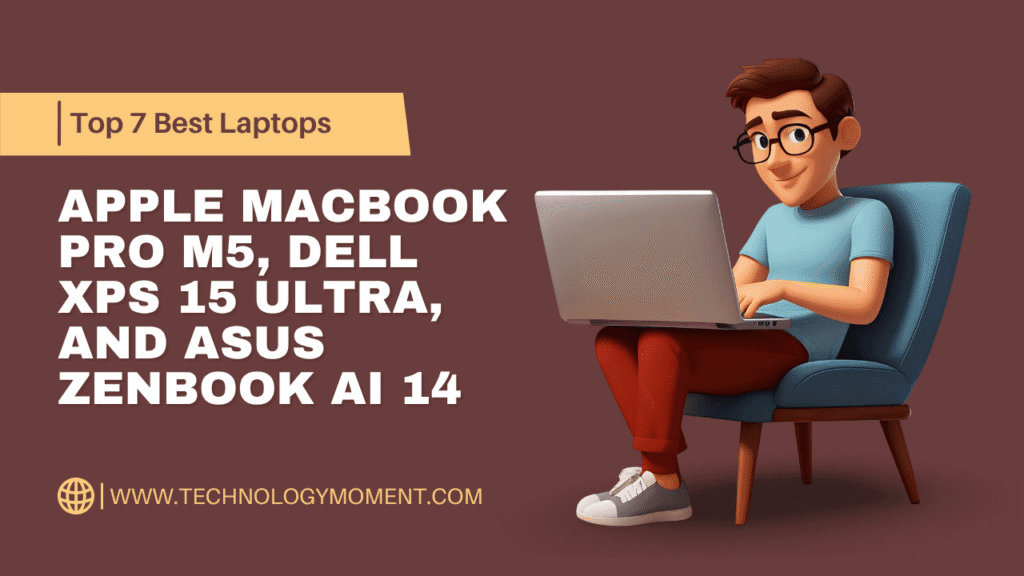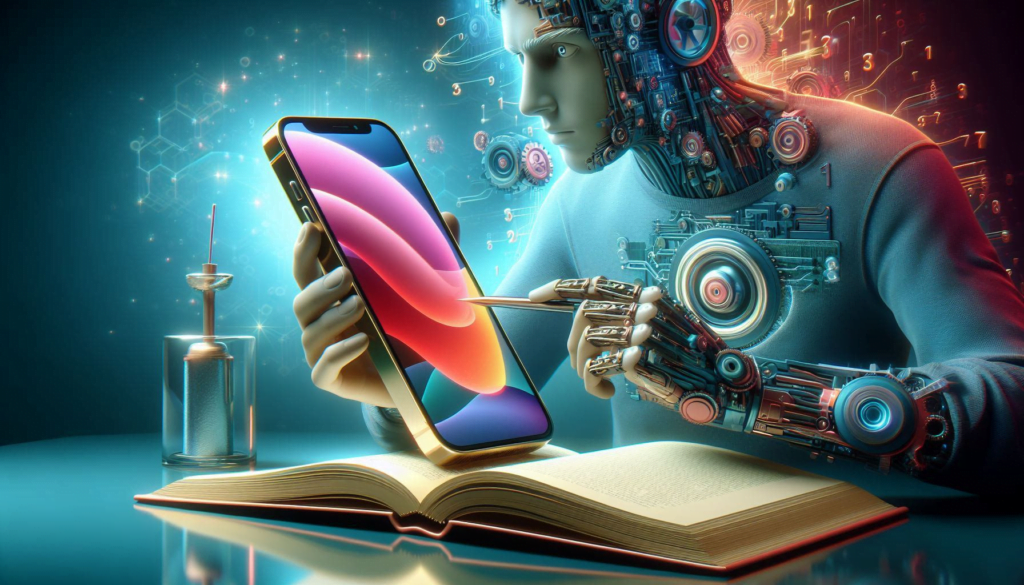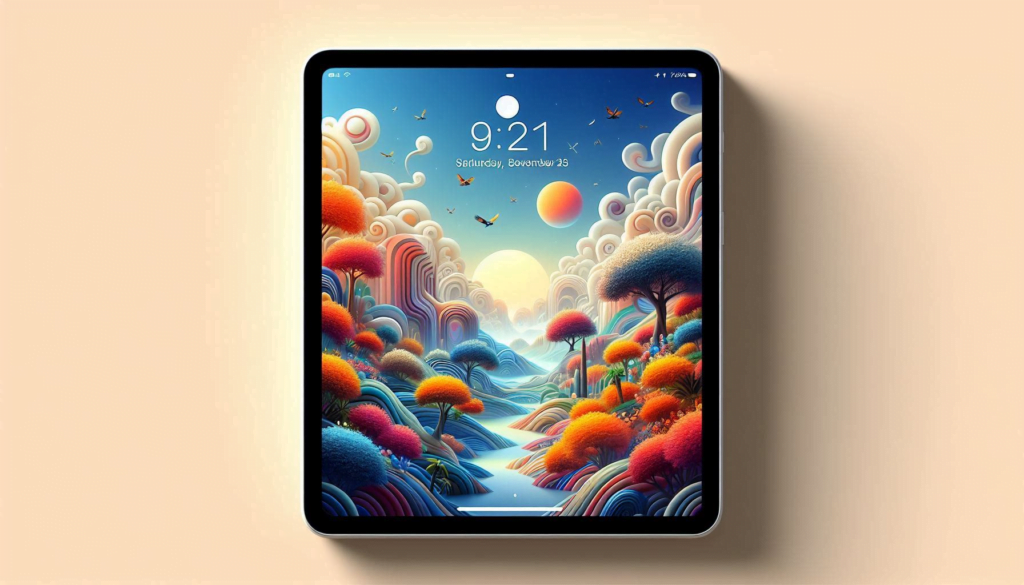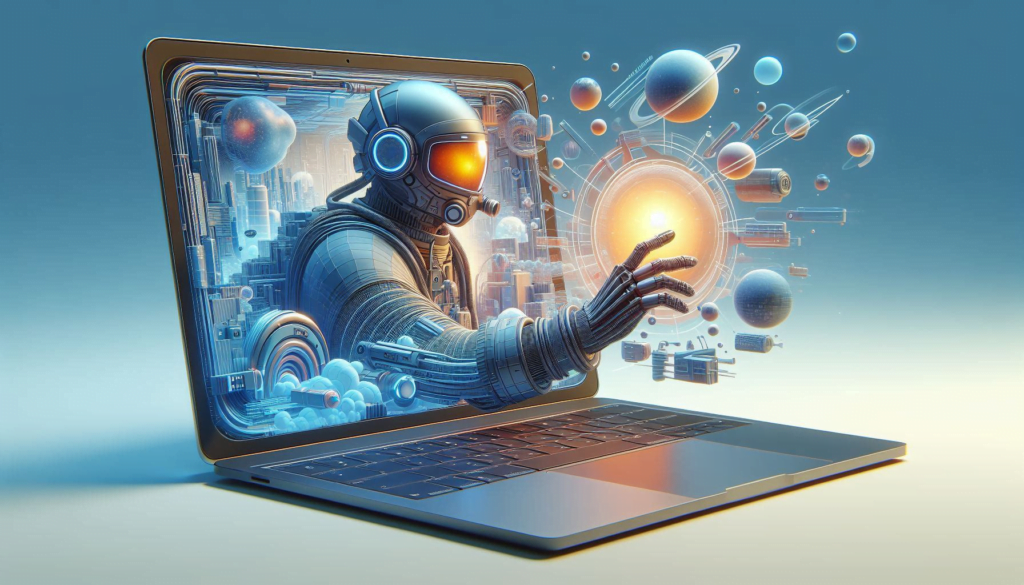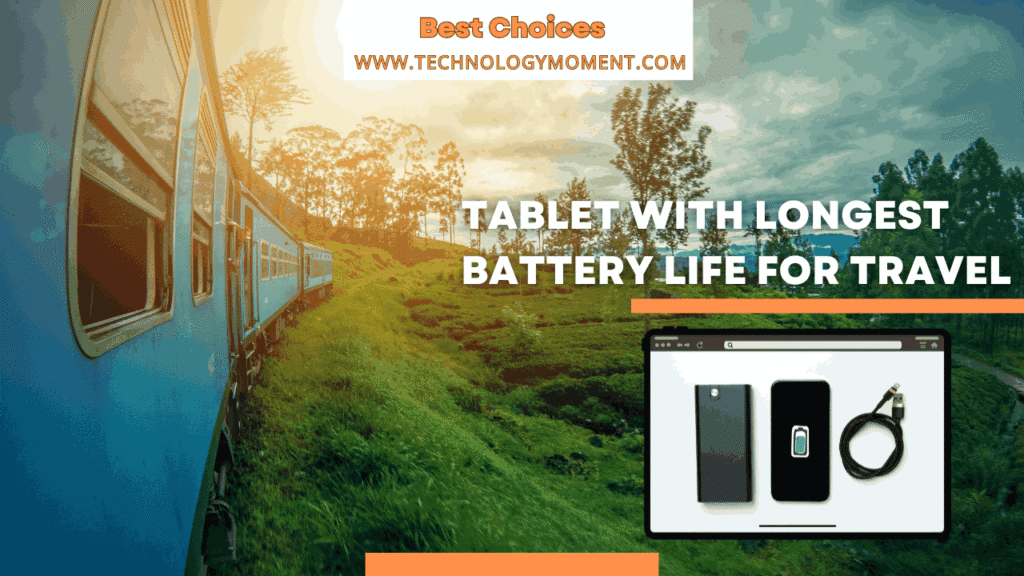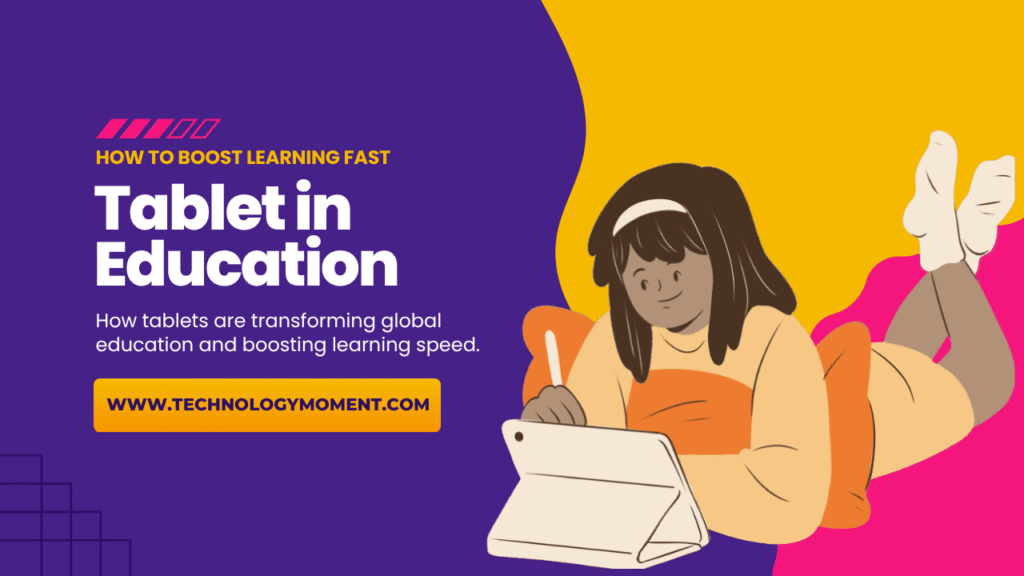
Hey there, tech enthusiasts and curious minds! At Technology Moment, we love exploring how technology is reshaping our world — especially in the classroom. One of the biggest shifts we’re seeing right now is how tablets are transforming education. By 2026, these sleek digital devices will no longer be a luxury but a must-have learning tool in schools and homes worldwide.
So, what’s driving this tablet revolution in education? It’s not just about replacing textbooks with screens — it’s about making learning faster, smarter, and more personal. From AI-powered apps to interactive lessons and cloud classrooms, tablets are helping students learn anytime, anywhere.
In this article, “Tablet in Education 2026 Trends: How to Boost Learning Fast,” we’ll explore the future of digital learning and how you can use tablets to get the most out of it. We’ll break down global trends, practical tips for teachers and students, and a peek into what’s next in education tech.
Ready to see how tablets are turning classrooms into interactive learning hubs? Let’s dive in and discover how technology in 2026 will boost learning faster than ever before!
Table of Contents
The Evolution of Tablet in Education
The story of tablets in education is one of quiet revolution. Just a few years ago, tablets were seen as cool tech toys. Students wanted them for games, not grades. But things changed fast. As schools started exploring new ways to teach, tablets became digital classrooms in hand.
Early in the 2010s, schools in the US, Europe, and parts of Asia began using tablets to replace heavy backpacks full of books. It was a small step that turned into a global movement. Teachers realized that tablets could hold thousands of e-books, interactive lessons, and visual learning apps, all in one place. Students no longer had to flip through old textbooks; they could learn from real-time updates and videos that made topics easy to understand.
By the early 2020s, tablets weren’t just optional—they were essential. The COVID-19 pandemic made that crystal clear. With classrooms closed, tablets became lifelines for remote learning. Students joined virtual classes, took tests online, and collaborated with peers using cloud tools. This period showed the world that digital learning wasn’t a luxury anymore; it was a necessity.
Now, as we move toward 2026, tablets are smarter, faster, and more affordable. Education systems around the world are rethinking learning strategies, and tablets are at the center of it all. They bridge the gap between traditional teaching and digital innovation, making education more inclusive and flexible than ever before.
Why Tablets Matter in Modern Classrooms
Let’s face it: attention spans are shorter, distractions are everywhere, and old teaching methods often fail to keep students hooked. That’s where tablets make a difference.
Tablets create a dynamic learning environment. Instead of sitting through long lectures, students get to explore subjects in fun, interactive ways. Imagine learning about space through a 3D solar system app or understanding anatomy by rotating a digital human body model. Learning becomes a personal adventure, not a routine.
The beauty of tablets lies in personalization. Every student learns differently. Some are visual learners, some are auditory, and others love hands-on activities. Tablets cater to all these styles with tailored apps, games, and quizzes. A child in India can access the same math lesson as a student in Canada, breaking down barriers of geography and language.
Accessibility is another game-changer. Tablets are lightweight, portable, and can connect anywhere. Students with disabilities benefit greatly from voice-to-text tools and screen readers. These features make learning inclusive and fair for everyone.
Ultimately, tablets turn passive learners into active participants. They empower students to ask questions, find answers, and stay curious—all from the comfort of their digital desk.
Global Trends Shaping Tablet Use in 2026
The year 2026 is shaping up to be a landmark for educational technology, or “EdTech.” Tablets are no longer just digital notebooks—they’re smart companions powered by AI, cloud computing, and immersive learning.
One of the biggest trends is AI-driven education. Tablets now come equipped with intelligent systems that track student performance and recommend learning materials based on strengths and weaknesses. Imagine an app that knows when you’re struggling with algebra and adjusts the difficulty level automatically—that’s not the future; it’s happening now.
Augmented Reality (AR) and Virtual Reality (VR) are taking lessons beyond textbooks. With AR, students can scan a page and watch 3D dinosaurs roar to life. With VR, they can take virtual tours of historical places, explore planets, or even conduct science experiments safely. This hands-on learning keeps them engaged and excited.
Gamification is another big trend. Students love games, and educators are using that to their advantage. Educational games turn lessons into fun challenges, rewarding progress with badges or points. This builds motivation and makes learning addictive in the best way possible.
We’re also seeing the rise of cloud-based classrooms. Everything—from assignments to attendance—is now stored online. This means students can switch from one device to another without losing progress. Teachers, too, can monitor learning in real-time, provide instant feedback, and collaborate globally.
These global trends show one clear thing: by 2026, tablets will be the beating heart of digital learning ecosystems worldwide.
Benefits of Tablets in Education
The benefits of tablets in education go far beyond convenience. They transform the entire learning experience.
First, they boost collaboration. Students can work on group projects from anywhere. A learner in Tokyo can team up with a partner in London to create a shared presentation in real-time. This global teamwork builds skills for the modern workplace.
Second, tablets offer instant access to updated information. Unlike printed books that go outdated quickly, digital content is always fresh. Students can learn about recent scientific discoveries or world events as they happen.
Tablets also make education more cost-effective in the long run. While there’s an upfront cost, schools save on printing, paper, and maintenance. Everything from assignments to grades becomes digital. This not only saves money but also supports eco-friendly, paperless learning—a crucial step toward sustainability.
Another major benefit is engagement. Tablets make even the toughest subjects approachable. Through animations, videos, and gamified quizzes, students stay focused longer. They no longer just read—they experience learning.
Finally, tablets promote independent learning. With easy access to global knowledge bases, students can research topics, take online courses, and explore interests beyond the curriculum. It encourages curiosity, which is the foundation of lifelong learning.
Challenges of Tablet-Based Learning
Of course, it’s not all smooth sailing. As much as tablets empower students, they also come with challenges that schools and educators must face head-on.
The biggest issue is the digital divide. Not every student can afford a tablet or a stable internet connection. In developing regions, this gap widens educational inequality. Governments and institutions need to step up with affordable access programs to make digital learning truly inclusive.
Then there’s screen time. Long hours of study on screens can strain eyes and affect posture. Schools must teach digital well-being and encourage regular breaks. Balanced use of technology is key to healthy learning habits.
Teachers, too, face a learning curve. Not all educators are tech-savvy, and adapting to digital tools takes time. Schools must provide proper training and technical support to help teachers make the most of tablets.
Another concern is distraction. Tablets can open doors to social media and games, pulling students away from studies. The solution lies in structured digital discipline—using parental controls, focus apps, and well-defined classroom tech policies.
Despite these challenges, the potential of tablets far outweighs the drawbacks. With the right balance, they can truly reshape education into something faster, smarter, and more inclusive for everyone.
Future Technologies in Educational Tablets
The future of tablets in education looks exciting. By 2026, these devices will go far beyond simple screens and apps. We’ll see a mix of AI-driven interfaces, smart sensors, and even foldable designs that change the way we learn.
Imagine a tablet that adjusts brightness automatically to protect your eyes or detects when you’re losing focus and offers short breaks. Sounds futuristic? It’s already happening in early prototypes.
We’re also moving toward 6G-powered tablets, allowing instant connectivity even in remote regions. This means no buffering, no delays—just seamless access to digital classrooms anywhere in the world.
And the best part? Tablets are becoming more energy-efficient and eco-friendly. Companies are working on solar-powered and recyclable models, ensuring sustainability joins hands with innovation. In short, the future tablet won’t just be a device; it will be your learning companion—intelligent, portable, and responsive to your personal needs.
The Role of AI in Tablet Learning
Artificial Intelligence is the heart of digital education. In 2026, AI will take learning on tablets to a new level of personalization. Imagine your tablet analyzing your strengths, identifying weak areas, and automatically tailoring lessons to fit your pace.
With AI-powered tutoring systems, students can get real-time help—just like having a private teacher available 24/7. Whether it’s solving math problems, improving grammar, or practicing pronunciation, AI acts as your study buddy.
AI also improves language translation, breaking barriers for students worldwide. You can read a French science book or listen to a Spanish lecture in your own language instantly. For global education, that’s a massive leap forward.
Moreover, AI-based analytics help teachers track progress more efficiently. Instead of guessing who’s struggling, they receive instant insights and can offer help where it’s truly needed. Learning becomes faster, smarter, and deeply human—even though it’s driven by machines.
Augmented and Virtual Reality Integration
If you think learning from a tablet is cool, imagine stepping into your textbook. That’s what Augmented Reality (AR) and Virtual Reality (VR) are doing to education.
AR adds digital layers to the real world. For example, when students point their tablets at a diagram of the solar system, planets start orbiting right on their screen. It’s not just reading about science—it’s living it.
VR takes things further by creating full virtual classrooms. Students can explore ancient civilizations, dive into the ocean to study marine life, or perform chemistry experiments safely—all without leaving their desks.
These immersive experiences make learning fun and memorable. They also boost understanding by engaging multiple senses—sight, sound, and even motion. As technology advances, AR and VR will become lighter, faster, and more accessible to every school worldwide.
Cloud-Based and Collaborative Learning
Education today is all about connection and collaboration. Cloud-based tablets are turning that idea into a daily reality. With cloud storage, students can access their homework, notes, and projects anytime, anywhere—no more “I forgot my notebook” excuses.
Teachers can share resources instantly, while students can work on group projects from different continents. Real-time updates mean no more waiting for emails or file transfers. Everything syncs automatically through platforms like Google Workspace for Education or Microsoft Teams.
Cloud learning also supports data safety and progress tracking. Even if a tablet gets lost or damaged, all information remains secure in the cloud. That’s a big relief for schools and parents alike.
This model promotes equal access, too. With affordable internet plans and shared cloud licenses, even small schools can join the digital revolution. Cloud collaboration is shaping a future where education is borderless and truly global.
How Schools and Institutions Can Implement Tablets Effectively
Switching to tablet-based learning sounds exciting, but it takes planning and purpose. The first step is choosing the right ecosystem—Android, iOS, or a hybrid platform that matches your school’s goals. What matters most is compatibility, affordability, and ease of use.
Schools should start with digital literacy programs for both teachers and students. A great tablet is useless if users don’t know how to make the most of it. Training sessions and interactive workshops help everyone get comfortable with the new tools.
Balancing technology with traditional methods is also key. Tablets shouldn’t replace teachers; they should empower them. Teachers can blend digital lessons with real-world discussions and creative activities to keep learning balanced.
Another crucial step is ensuring internet access and security. Schools need strong Wi-Fi infrastructure and proper cybersecurity measures to protect students online. Many institutions are now working with tech companies and governments to create safe digital environments.
Finally, regular feedback from students, parents, and educators helps fine-tune the system. Implementing tablets isn’t a one-time project—it’s a continuous process of innovation, improvement, and adaptation.
Government and Corporate Role in Promoting Tablet Education
Governments around the world are realizing that tablets aren’t just tech gadgets—they’re gateways to quality education. In many developing countries, policymakers are pushing for digital inclusion, ensuring every child, even in remote areas, can access modern learning tools. For example, some governments now provide free tablets to students or subsidized data plans so online education becomes accessible for all.
Education ministries are also partnering with tech companies to build national e-learning platforms, where content is customized in local languages. These efforts are transforming traditional classrooms into smart learning spaces that promote creativity and self-paced learning.
On the corporate side, companies like Apple, Microsoft, and Samsung are leading the way with education-focused tablet models and digital ecosystems. They’re also collaborating with educational institutions to offer teacher training programs on using tablets effectively.
Corporate social responsibility (CSR) projects are another major driver. Many global firms are donating refurbished tablets to rural schools, bridging the digital divide that often limits opportunities. Together, governments and corporations are building the foundation for a tech-driven education revolution—one that ensures no learner is left behind.
Best Practices for Teachers Using Tablets
When teachers embrace tablets, classrooms come alive. But to make the most of this technology, effective strategies are essential. One of the best practices is adopting a blended learning approach—combining traditional teaching with digital lessons. This balance keeps students engaged while maintaining strong foundational learning.
Teachers can use interactive tools like digital whiteboards, AR-based apps, or quiz platforms to make lessons fun and memorable. Tablets allow teachers to track each student’s progress instantly, helping them identify strengths and areas that need improvement. It’s like having a smart assistant in the classroom!
Another key practice is content customization. Every student learns differently, and tablets make it easy to adjust lessons based on individual needs. For instance, slow learners can revisit recorded lectures, while fast learners can move ahead through advanced exercises.
Teachers should also encourage collaborative projects using cloud apps. These tools help students work together, share ideas, and learn teamwork skills vital in today’s digital world.
Lastly, teachers must ensure digital discipline. Tablets should be learning tools, not distractions. Setting clear rules for device use and promoting responsible digital behavior keeps the classroom productive and safe.
Predictions for 2026 and Beyond
The future of education looks incredibly digital—and tablets are right at the center of it. By 2026, experts predict that over 80% of schools worldwide will use tablets as their main teaching device. Traditional textbooks will become a thing of the past, replaced by interactive, cloud-based content that updates in real time.
Learning will become more personalized and immersive. With AI tutors built into tablets, students will receive one-on-one guidance just like from a private teacher. Virtual and augmented reality lessons will make subjects like history, biology, and astronomy come alive in vivid 3D experiences.
Hybrid learning will dominate. Students will switch seamlessly between classroom and online environments, giving them flexibility and freedom. And as 6G networks roll out, ultra-fast connections will allow instant collaboration across continents—imagine a student in India working on a science project with a friend in Canada in real time.
Sustainability will also be a huge focus. Schools will adopt eco-friendly tablets with recyclable components and solar charging options. Education is heading toward a future that’s smart, green, and globally connected.
Conclusion
Tablets in education aren’t just a trend—they’re a transformation. They empower teachers, engage students, and connect classrooms worldwide. As governments, corporations, and educators unite, we’re witnessing the birth of an inclusive, tech-powered education system that adapts to every learner’s pace and style.
By 2026, tablets will make learning faster, smarter, and more human-centered. The focus will shift from memorization to creative thinking and collaboration. And that’s what true progress in education looks like—where technology becomes the bridge between curiosity and knowledge.
FAQs
How are tablets changing education globally?
Tablets make learning interactive and accessible. They allow students to watch videos, play educational games, and access cloud-based lessons anytime, anywhere.
What are the main benefits of using tablets in classrooms?
They improve engagement, enable personalized learning, and reduce paper use. Plus, they make lessons fun and easier to understand.
How can governments support tablet-based education?
Governments can offer subsidies, provide free tablets to underprivileged students, and build strong digital learning infrastructures for schools.
What challenges come with tablet learning?
The main issues include unequal access, screen time concerns, and the need for teacher training to use technology effectively.
What does the future of tablet education look like after 2026?
Expect AI-powered learning, AR-based subjects, and a global network of digital classrooms—all focused on creativity, collaboration, and inclusivity.

